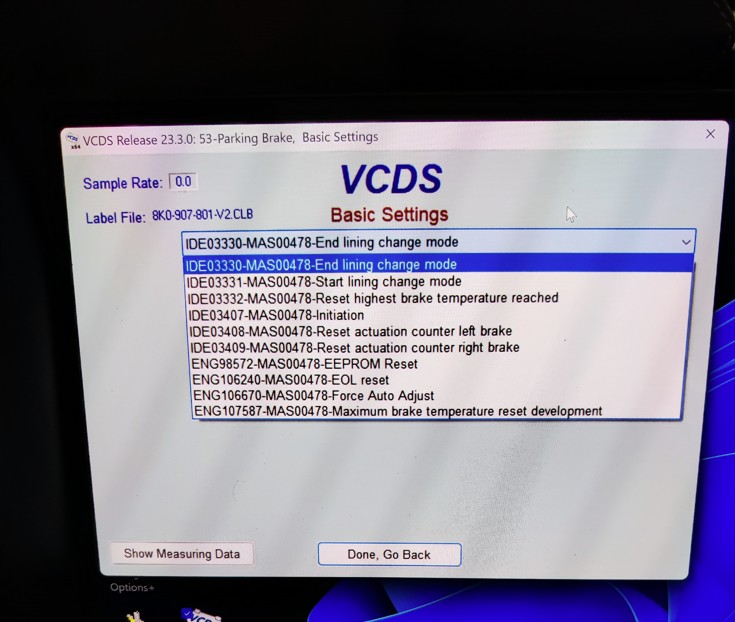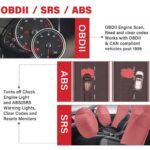Replacing brake pads and rotors often requires specific procedures, especially on modern vehicles with electronic parking brakes (EPB). This article addresses the use of VCDS (Vag-Com Diagnostic System) for brake tests, specifically focusing on the differences between UDS and non-UDS EPB modules in Audi vehicles. We’ll explore a real-world example of an Audi S5 (8T) and the challenges encountered when using VCDS for rear brake pad and rotor replacement.
Navigating VCDS for EPB Procedures
The owner of a 2016 Audi S5 (8T) recently replaced the rear brakes using a guide for the Audi A5 (8T) found on the Ross-Tech Wiki. However, upon connecting VCDS to the car and accessing the Parking Brake module (Module 53), the displayed options under Basic Settings didn’t match the wiki instructions. The expected “Group Code 007” for opening the rear parking brake was replaced with a dropdown menu with different wording.
 VCDS Parking Brake Options
VCDS Parking Brake Options
Further investigation revealed that the VCDS interface matched the procedure outlined for an Audi A4 (8R/8K), which utilizes a different EPB system. Notably, the A4 procedure lacked a function test, unlike the A5 instructions. Despite this discrepancy, the brake replacement was completed successfully by cycling the parking brake and checking for fault codes. A subsequent test drive revealed no issues.
Decoding the Discrepancy: UDS vs. Non-UDS
The difference in VCDS procedures stems from the type of EPB module installed in the vehicle. The Ross-Tech Wiki for the A5 mentions two types: UDS (Unified Diagnostic Services) and non-UDS. The written instructions on the A5 page pertain to the non-UDS module, while a linked video demonstrates the UDS procedure, which aligned with what the S5 owner encountered. This confirmed that the S5 was equipped with a UDS EPB module. The video can be found here: Link to relevant section.
Key Questions Regarding UDS EPB Modules
The discovery of the UDS module raised two important questions:
Does the UDS EPB Require a Function Test?
The UDS procedure in the video concludes with “End Lining Change Mode.” This raises the question of whether a separate function test is necessary for UDS EPB modules. Non-UDS modules typically require a function test, so understanding the difference is crucial. Why the discrepancy between the two systems?
Expecting Variations in Other Control Modules
Given the difference in EPB procedures, it’s reasonable to ask if other control modules in the S5 might also deviate from the information provided in the A5 Ross-Tech Wiki. Is this variation specific to the EPB module, or should discrepancies be anticipated in other areas?
Conclusion: The Importance of Correct EPB Procedures
Using the correct VCDS procedure for your specific EPB module is essential for proper brake maintenance. Understanding the difference between UDS and non-UDS systems can prevent confusion and ensure a successful brake job. While the S5 owner successfully completed the brake replacement, clarifying the need for a function test with UDS modules and potential variations in other control modules is crucial for future maintenance tasks. Further investigation and expert advice are recommended to address these remaining questions.

